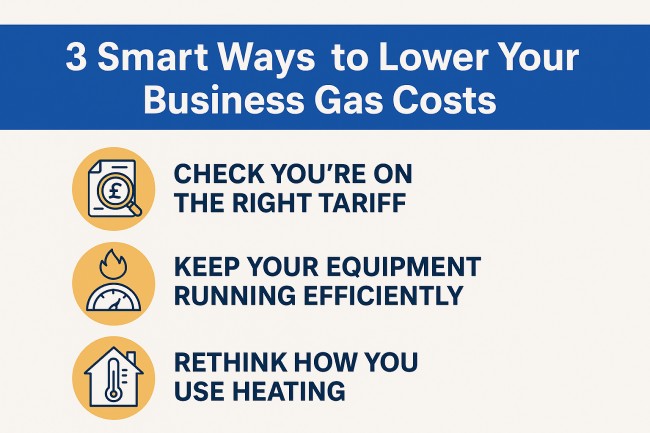3 Smart Ways to Lower Your Business Gas Costs

Running a business comes with all sorts of overheads, and gas bills are often one of the more unpredictable ones. Whether you use gas for heating, cooking, or part of your production process, it’s one of those things that can quietly eat into your bottom line. Fortunately, bringing those costs down doesn’t always require a complete overhaul. With a bit of attention in the right places, you can reduce what you pay without affecting how your business runs day to day.
Check You’re on the Right Tariff
It’s surprisingly common for businesses to stick with the same gas supplier for years without questioning whether they’re still getting a fair deal. But energy markets shift all the time, and the tariff you signed up for a while ago might not be working in your favour anymore. If you’ve never looked into switching, or if it’s been a while, now’s a good time to check what else is out there.
Have a look at your current contract, especially the end date and any notice period you’ll need to give. Once you’re close to the renewal window, compare business gas prices from other suppliers. You don’t necessarily have to switch, but knowing your options gives you a bit of leverage. Some providers may offer you a better rate just to keep your business. If time’s tight or the process seems too involved, there are brokers who specialise in helping businesses like yours find better deals and manage the switch without hassle.
Keep Your Equipment Running Efficiently
A lot of gas gets wasted simply because the equipment using it isn’t working as well as it should. Boilers, ovens, heaters and other gas-powered systems can gradually become less efficient if they’re not properly looked after. And when they’re not running efficiently, they tend to use more gas than necessary just to do their usual job.
Regular maintenance is an easy win here. Having your systems checked and serviced at the recommended intervals helps them run smoothly and safely. Something as straightforward as cleaning out a clogged burner or replacing a faulty thermostat can make a noticeable difference to how much gas gets used. It’s also worth keeping an eye out for any signs that something isn’t working quite right – like rooms that take ages to warm up, pilot lights going out, or bills creeping up for no clear reason.
In some cases, upgrading older equipment might make sense. Modern gas appliances tend to be designed with energy efficiency in mind, and the savings over time can outweigh the upfront cost. It’s not always the cheapest option in the short term, but depending on your usage, it could be well worth considering.
Rethink How You Use Heating
Heating tends to be one of the biggest drivers of gas costs, especially in the colder months. But how often do we stop and think about how heating is actually used in the workplace? In many cases, offices or shops are being heated for longer than necessary, or rooms that no one’s using are kept warm just out of habit.
One of the simplest changes is to install a programmable thermostat if you haven’t already. It allows you to set different temperatures at different times of day, so the heating isn’t on full blast when no one’s there. You can also set different zones if your building allows it, meaning only the areas in use get heated.
Staff habits also play a role. Encouraging people to close doors, report draughts, and be sensible with temperature controls can help avoid unnecessary use. And if your building is older, small insulation improvements, like fitting draught excluders or sealing window frames, can make it easier to keep the heat in, which means the boiler doesn’t have to work so hard.
With a bit of attention to how your business uses gas, it’s possible to make lasting changes that reduce your costs without compromising comfort or efficiency.


